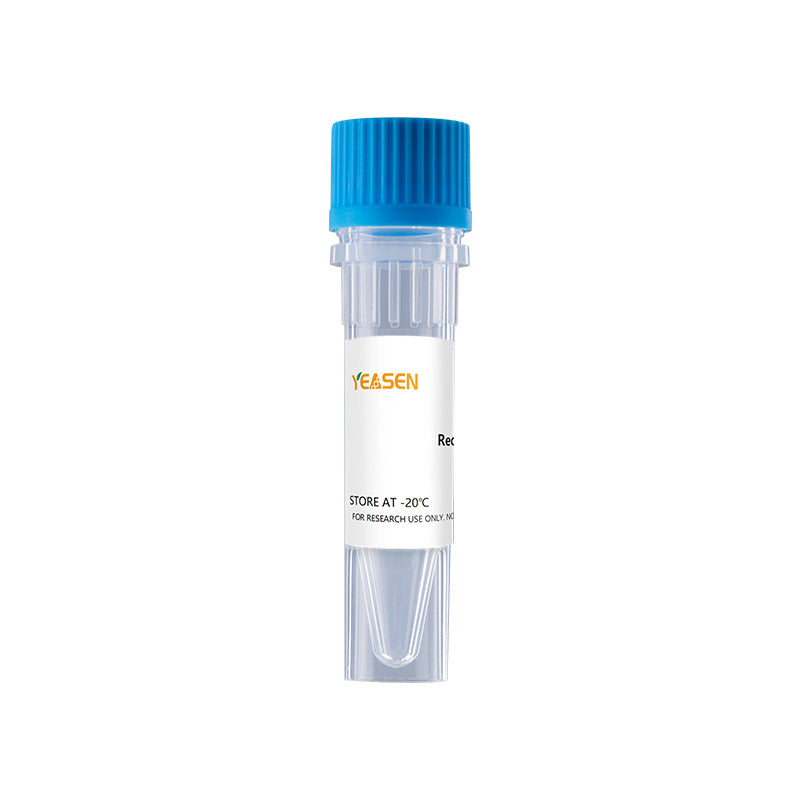Description
IL-1 is a name that designates two pleiotropic cytokines, IL-1 alpha (IL-1F1) and IL-1 beta (IL-1F2), which are the products of distinct genes. IL-1 alpha and IL-1 beta are structurally related polypeptides that share approximately 27% amino acid (aa) identity in equine. Both proteins are produced by a wide variety of cells in response to inflammatory agents, infections, or microbial endotoxins. While IL-1 alpha and IL-1 beta are regulated independently, they bind to the same receptor and exert identical biological effects. IL-1 RI binds directly to IL-1 alpha or IL-1 beta and then associates with IL-1R accessory protein (IL-1 R3/IL-1 R AcP) to form a high-affinity receptor complex that is competent for signal transduction. IL-1RII has high affinity for IL-1 beta but functions as a decoy receptor and negative regulator of IL-1 beta activity. IL-1ra functions as a competitive antagonist by preventing IL-1 alpha and IL-1 beta from interacting with IL-1 RI. The equine IL-1 beta cDNA encodes a 268 aa precursor. A 115 aa propeptide is cleaved intracellularly by the cysteine protease IL-1 beta -converting enzyme (Caspase-1/ICE) to generate the active cytokine. An alternatively spliced form of equine IL-1 beta has a deletion which encompasses the Caspase-1 cleavage site and potentially results in a membrane-associated form. The 17 kDa mature equine IL-1 beta shares 65%-75% aa sequence identity with canine, cotton rat, feline, human, mouse, porcine, rat, and rhesus IL-1 beta.
Product Properties
|
Synonyms |
IL-1 beta |
|
Accession |
|
|
GeneID |
|
|
Source |
E.coli-derived Equine IL-1β, Ala116-Ala268. |
|
Molecular Weight |
Approximately 17.3 kDa. |
|
AA Sequence |
AAMHSVNCRL RDIYHKSLVL SGACELQAVH LNGENTNQQV VFCMSFVQGE EETDKIPVAL GLKEKNLYLS CGMKDGKPTL QLETVDPNTY PKRKMEKRFV FNKMEIKGNV EFESAMYPNW YISTSQAEKS PVFLGNTRGG RDITDFIMEI TSA |
|
Tag |
None |
|
Physical Appearance |
Sterile Filtered White lyophilized (freeze-dried) powder. |
|
Purity |
> 95% by SDS-PAGE and HPLC analyses. |
|
Biological Activity |
The ED50 as determined by a cell proliferation assay using murine D10S cells is less than 20 pg/mL, corresponding to a specific activity of > 5.0 × 107 IU/mg. Fully biologically active when compared to standard. |
|
Endotoxin |
< 1.0 EU per 1μg of the protein by the LAL method. |
|
Formulation |
Lyophilized from a 0.2 μm filtered concentrated solution in 1 × PBS, pH 7.4, 0.1 % Tween-80. |
|
Reconstitution |
We recommend that this vial be briefly centrifuged prior to opening to bring the contents to the bottom. Reconstitute in sterile distilled water or aqueous buffer containing 0.1% BSA to a concentration of 0.1-1.0 mg/mL. Stock solutions should be apportioned into working aliquots and stored at ≤ -20°C. Further dilutions should be made in appropriate buffered solutions. |
Shipping and Storage
The products are shipped with ice pack and can be stored at -20℃ to -80℃ for 1 year.
Recommend to aliquot the protein into smaller quantities when first used and avoid repeated freeze-thaw cycles.
Cautions
1. Avoid repeated freeze-thaw cycles.
2. For your safety and health, please wear lab coats and disposable gloves for operation.
3. For research use only!
Payment & Security
Your payment information is processed securely. We do not store credit card details nor have access to your credit card information.
Inquiry
You may also like
FAQ
The product is for research purposes only and is not intended for therapeutic or diagnostic use in humans or animals. Products and content are protected by patents, trademarks, and copyrights owned by Yeasen Biotechnology. Trademark symbols indicate the country of origin, not necessarily registration in all regions.
Certain applications may require additional third-party intellectual property rights.
Yeasen is dedicated to ethical science, believing our research should address critical questions while ensuring safety and ethical standards.

